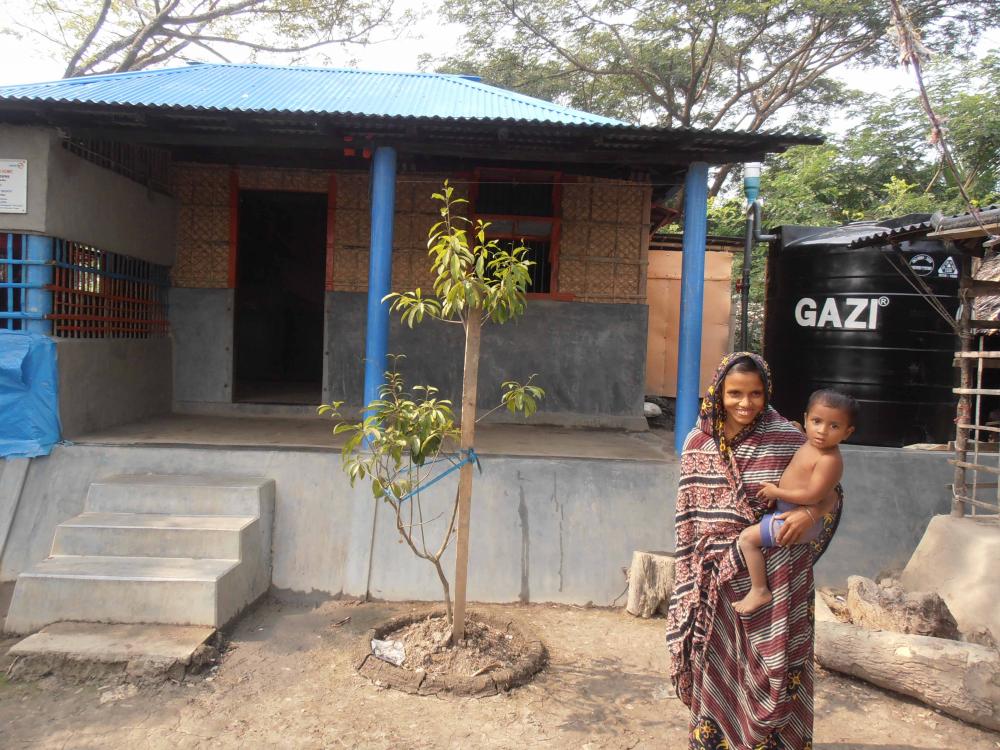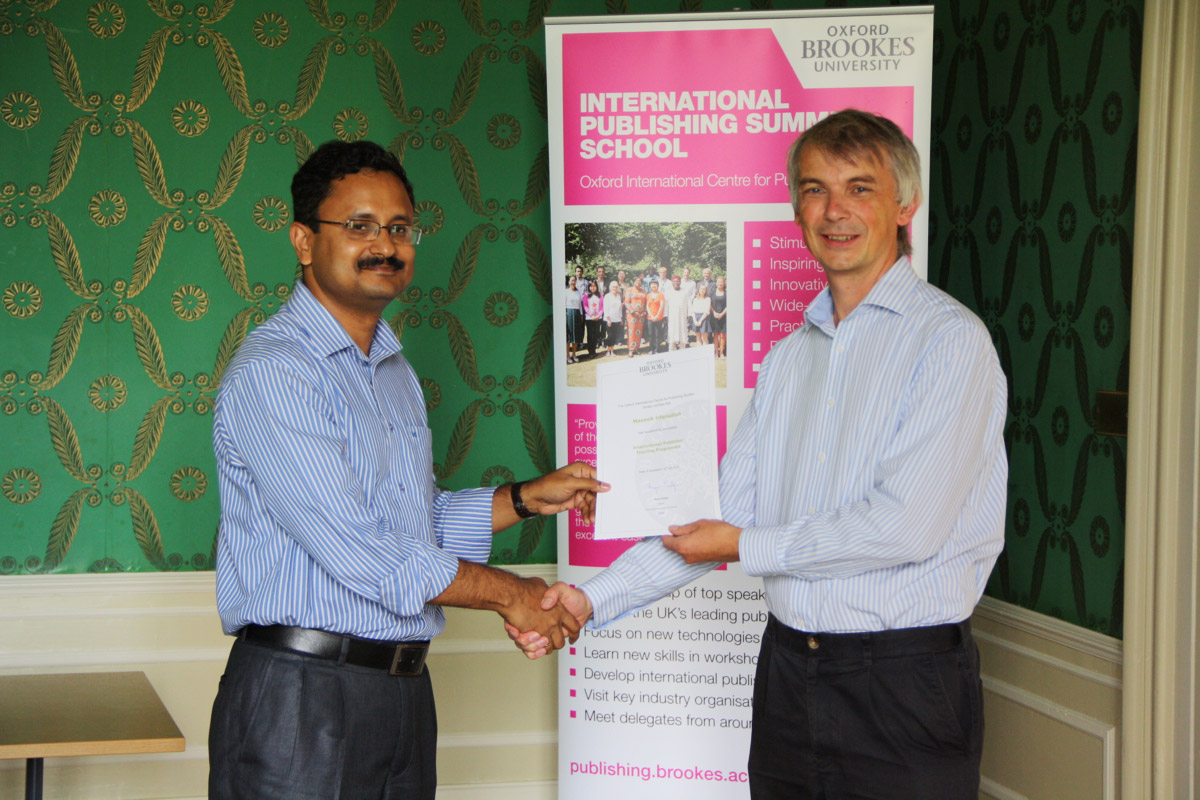MEMBER INTERVIEW: HASEEB MD. IRFANULLAH, Bangladesh
Haseeb is currently working for IUCN (International Union for Conservation of Nature) as the Programme Coordinator of Bangladesh Country Office in Dhaka. His interest in climate change adaptation, disaster risk management, natural resource governance and biodiversity conservation has led to him becoming an expert in the nature-people-knowledge nexus. Recently, he wrote a chapter for a book entitled Climate Change in the Bay of Bengal Region: Exploring Sectoral Cooperation for Sustainable Development. In the Bangladesh Chapter, Haseeb wrote ‘What Does Bangladesh Tell Us about Innovation in Climate Change Adaptation’. This June, ACCCRN interviewed him on the topic of innovation in climate change adaptation.
What is climate change adaptation to you, Dr. Haseeb?
As a student of biology, I am very fond of evolution. To me evolution is not only a prehistoric phenomenon that happened over millions of years, but it is a continuous process and can happen in much shorter spans of time. For example, our surroundings are changing all the time − naturally or because of us. To adjust to those changes, we change our ways of doing things to make our life easier, better.
Climate change is causing long-term changes to our surroundings in an unprecedented manner. It is changing our rainfall, our temperature, and our seasons. As a result, our water supply, food production, and our ecosystems are not the same as they used to be even a few decades back.
To tackle climate change, we need to reduce greenhouse gas emissions significantly so that the earth starts to cool down. Such a measure―called climate change mitigation―however, would start showing its positive effects over decades to centuries to come.
Before the world weather system returns back to a comfortable status, we need to continue adjusting to the climatic changes we are already experiencing. We need to adjust all our basic needs systems – water, food, shelter. We need to change our plans for economic development; we need to change directions of our investment; we need to have new technologies to cope with climatic changes. We also need to change our mind set and the way it defines economic growth, development, comfort.
To me, ‘climate change adaptation’ is not only an approach or doing certain things to survive changing climate. To me, adaptation is a philosophy of survival in a rapidly, climatically changing world and evolving into a better species − for us and for Nature as a whole.
As you mentioned before, our surrounding is changing all the time and it’s natural. Within the climate change adaptation context, innovation is necessary at some point. How do you define innovation in climate change adaptation?
When we invent new technology or introduce a new system to adapt to climate change, our purpose is to reduce its negative impacts or to take benefit out of the changes. In the cyclone-prone area of Bangladesh, which devoid of sufficient cyclone-shelters, for example, a new model of a high-wind, storm surge-resistant, low-cost house, called ‘community shelter home’, was designed and piloted. During normal times of the year, the family owning the house would live in it and maintain it. But during natural calamities, it could accommodate up to six families living nearby, thus saving lives and assets. This innovation in adaptation tackles a number of challenges − the shortage of large cyclone-shelters, reluctance of people to travel far from their houses during moderately high winds, and the maintenance cost of a shelter.

Innovation in adaptation, however, is not always about creating new technologies. A traditional technology or practice in one part of a country can be an innovation in a new area, to tackle new problems. I will explain this with my favourite example, the floating gardens of Bangladesh. In several districts of southern-central, coastal Bangladesh, floating garden beds are made with rotten water hyacinth in waterlogged areas for growing seedlings and vegetables. It has been a traditional economic activity for that region for ages. But, over the last 13 years or so, NGOs and the Government have been introducing this traditional technology to northern, north-eastern and central wetlands of Bangladesh, first as a means of agricultural innovation, and later as an innovation in adaptation.
Climate change is nothing but dynamic. As time passes, our surrounding environment changes, and so do our socio-economic conditions and our aspirations. What once worked as an adaptation measure in a particular place, and at a specific time, may not remain effective under such changed conditions. So we need to change the way we work and innovation comes in as a continuous process.
Can you provide some examples?
To tackle salinity intrusion, the researchers of Bangladesh have invented several varieties of rice and other crops that survive up to certain salinity levels. It is, therefore, important to keep the salinity of irrigation water as low as possible to maintain coastal soil salinity tolerable. But usual sources of irrigation water, like rivers, canals and ground water, are highly contaminated with salinity. In a recently tested model on the coast, monsoon rain was caught in small ponds to irrigate nearby rice fields in the winter. The pond owners not only received payment from the rice farmers for this service, they also benefitted by cultivating low-salinity-tolerant fish almost all-the-year-round.
Of course, there are issues beyond technological innovations. To tackle climate change, our current concepts and approaches need to accept innovation by synergizing between disaster risk reduction and climate change adaptation or mainstreaming ecosystem-based adaptation (EbA), for example. We need to incorporate innovation too in our governance structure and in the implementation of our development initiatives to respond to the changing situation. Our financing mechanism needs to be adaptive as well to channel global funds to the national level and then national funds to the local level, or to introduce innovations like forecast-based financing. Finally, our monitoring and evaluation system also needs to be adaptive to follow and measure the effectiveness of our adaptation actions.
Talking about finance, in Bangladesh especially, how do you see the financial support from government or donors or other organizations to carry out such an innovation in climate change adaptation?
I see innovation in climate change adaptation as a natural process. Financial support may determine its actors, its direction, its pace, its effectiveness, but innovation will continue since it is crucial to adapt to climate change.
Like any development agenda, the governments and the donors go by their own strategy and mandate when it comes to climate change. From the first day of this month, from USA’s decision to withdraw from the Paris Agreement and world’s response to that, we have seen how strong those guiding principles can be. Civil Society Organizations, research organizations and networks do depend on the governments and the donors to design, to test, and to promote innovation in adaptation.
If we talk about the amount of funds available to use for adaptation, no one would say it is enough, globally. I would rather focus on if my government and donors here are supporting innovation in adaptation, principally and financially. My answer is “yes”. In Bangladesh, established in 2010, government-funded Bangladesh Climate Change Trust Fund (BCCTF) and donor-funded Bangladesh Climate Change Resilience Fund (BCCRF) are two excellent financing mechanisms, which are innovations themselves, and have been supporting innovations while funding projects. I have not seen any analysis of how much money from these two funds (total about US$ 600 million) or any other sources has invested in innovation in adaptation in Bangladesh. But given Bangladesh is often called the ‘adaptation capital of the world’, it could be an interesting exercise.
I see innovation in adaptation facing a number of challenges linked with financial support. We often see donors’ funds for designing, piloting, and assessing innovative measures on a small scale. But it remains a challenge to get funding to take the tested innovations to wider communities to create impact at scale. In some cases, especially infrastructural innovations, they often do not survive a cost-benefit analysis or value-for-money calculation. Donor interest in post-implementation follow-up is also very rare. But when we talk about innovation in adaptation, such auditing is important.
Recently, Bangladesh has drafted ‘Bangladesh Environment, Forestry and Climate Change Country Investment Plan (CIP) (2016−2021)’ – the first CIP in the world for these related sectors. One of the components of this CIP is a Research Master Plan. While the CIP awaits approval, the Government, with technical support from FAO, has already started monitoring the investment in all these three sectors. It is hoped that the CIP will guide the Government and donors to invest more in climate change adaptation by promoting innovation.
Very interesting and challenging! Anyway, Dr. Haseeb, you wrote a book chapter entitled ‘What Does Bangladesh Tell Us about Innovation in Climate Change Adaptation’, and you mentioned about the importance of adaptation actions on the ground, with the people, also about a participatory or community-based approach. How do you see people can play part in innovating actions to adapt with changing climate?
People on the ground are dealing with climate change day in, day out. They are already playing their parts in adapting to the changing situation. But traditional and local knowledge systems have their limitations to tackle climate stresses to the fullest.
Given the limited resources and time we have, I believe neither traditional knowledge and practices, nor advanced technologies alone are likely to be enough for continuous adaptation. It is therefore important to mix traditional knowledge and practices with advanced knowledge and technologies.
To do so, we need to develop innovations in climate change adaptation with the communities. They will be co-innovators, not mere adopters of innovations developed somewhere else. Let me give you an example of innovation in sea-going boats. Due to climate variability, the Bay of Bengal now gets rough more frequently than a couple of decades ago. As a result, the bottom planks of wooden fishing boats weaken quickly as those hit submerged mud-flats more frequently than before. A few years back, naval experts and local carpenters came together to make simple, low-cost modifications in the existing boat design, like steel frames or ribs that reinforced the boats and saved the fishermen from drowning.
We need to build an ‘innovation ecosystem’ at the community level where community, external actors, and technology all interact. Such a system will help the climate-vulnerable people to access, assess and adopt adaptation technologies useful for them. It will also allow them to work with NGOs, local government entities, and researchers to improvise available technologies and practices to cope with climate variability and climate change.
In the book chapter, you also mentioned about the importance of monitoring, learning, and evaluation system in climate change adaptation initiative. What is your biggest concern regarding this aspect of innovation in CCA?
Unless scaled up, the journey of an innovation is incomplete. It also fails to reach its ultimate destiny affecting positively to a larger population desperately needing the benefits of the innovation.
But before scaling up, every innovation must be piloted in newer places since all places with same problem might not respond to the solution in the same way. After successful testing, and once scaled up, an innovation needs to be followed up on. We need to do that not only because climate is changing and showing variability, but also because innovation that is useful now may not be useful after a period of time. By monitoring a scaled up innovation, we can learn what worked and what did not work and why. That knowledge will help us to improvise or adjust our innovation further to continue giving benefit to the people. It will also help us to check if an adaptive innovation is turning into a ‘maladaptation’ or not – harming climate vulnerable people, instead of helping them.
As I noted above, inadequate interest of donors in post-project follow-up is a major challenge. If an ‘innovation ecosystem’ is put in place, as I have suggested above, we can engage the community to take charge of the monitoring of the innovation they are practicing, even if external support is no longer available.
Dr. Haseeb, it is such an insightful conversation with you. Lastly, is there any message that you want to emphasize to the network regarding innovation in CCA?
Innovation in adaptation is an exciting endeavour. It is a process of creating a new technology, a practice, or a policy that can help a vulnerable family, a community, or a country to cope with climate change and climate variability.
As I said above, the ultimate goal of an innovation is to work at scale where it is reaching and benefitting as many people as possible. And we need resources to cross the distance between the piloting and the scaling up of an innovation. To tap ever-scarce resources, we need to prepare case studies showing how innovations have the potential to change lives, making people resilient, not only in terms of money, but also in terms of what money cannot measure – self-belief, trusted relationships, and collective aspiration, for example.
A network, like ACCCRN, can play an important role by publicizing cases of innovations at work. Sharing potential innovations among its members, evaluating their performance at different geographical settings, and identifying the best options and the factors making them successful, are possible through collaboration among the members of climate change networks.
It is still a challenge to fix national or global targets and indicators to measure ‘adaptation’ success. Nevertheless, I believe, how prompt and persistent we are in responding to climate change through innovation will be one of the indicators of measuring our resilience.
Dr. Haseeb Md. Irfanullah is the Programme Coordinator of IUCN Bangladesh Country Office. An ecologist by training, Haseeb's interests in climate change include innovation in adaptation, ecosystem-based adaptation, and communication of climate change research. He tweets as @hmirfanullah and is available at hmirfanullah@yahoo.co.uk.







